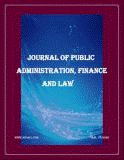DETERMINANTS FACTORS OF TAX EVASION IN ROMANIA AND ITALY
DETERMINANTS FACTORS OF TAX EVASION IN ROMANIA AND ITALY
Author(s): Roxana-Aurelia MârțSubject(s): Fiscal Politics / Budgeting, Accounting - Business Administration, Corruption - Transparency - Anti-Corruption
Published by: Editura Tehnopress
Keywords: Tax evasion; corruption; government effectiveness; profit tax;
Summary/Abstract: The phenomenon of tax evasion has been investigated in numerous national and global studies aimed at understanding the determinants and its economic implications. The research of tax evasion at national level has mainly emphasized the role of economic factors and less that of non-financial factors (Alm and Torgler, 2006, p. 225). Many studies on the phenomenon of tax evasion have highlighted the importance of non-financial variables. Riahi-Belkaoui (2004, p. 141) points out "the need for a contingency theory of fiscal compliance that will appeal not only to the economic determinants of fiscal compliance, but also to the institutional and moral determinants". Richardson's study (2006, p. 150) examined the tax avoidance factors in 45 countries and concluded "non-financial determinants have the strongest impact on tax evasion" compared to economic variables. Moreover, Richardson (2008, p. 67-78) found evidence that adding nonfinancial variables to tax evasion models increases its explanatory power. With the help of World Bank's Worldwide Governance Indicators, published on the website http://info.worldbank. org/governance/wgi/, the data for the period 2009 - 2018 for Romania and Italy were analyzed. This study was carried out with the help of non-financial indicators: Corruption control (Coc) and Government effectiveness (GE) and economic indicator Profit tax (PrTx). Based on the hypothesis that, tax evasion exists, the PrTx indicator was used as a dependent variable. THE MAIN PURPOSE: The study tracks the impact of non-financial indicators on tax evasion through the variation of the independent indicators WGI: GE and Coc. THE ASPECTS TO BE TREATED further in the article: With the help of these indicators, was measured the evolution of the PrTx indicator and analyzed over a period of 10 years and a comparison was made between Romania and Italy. To understand the influence of independent variables on tax evasion and the relationship between indicators was it used a linear mixed model. Thus, both a positive and a negative correlation between the variables were identified. Resulting according to the validation of the hypotheses that, non-financial variables have a considerable impact on tax evasion.
Journal: Journal of Public Administration, Finance and Law
- Issue Year: 2020
- Issue No: 17
- Page Range: 289-300
- Page Count: 12
- Language: English

